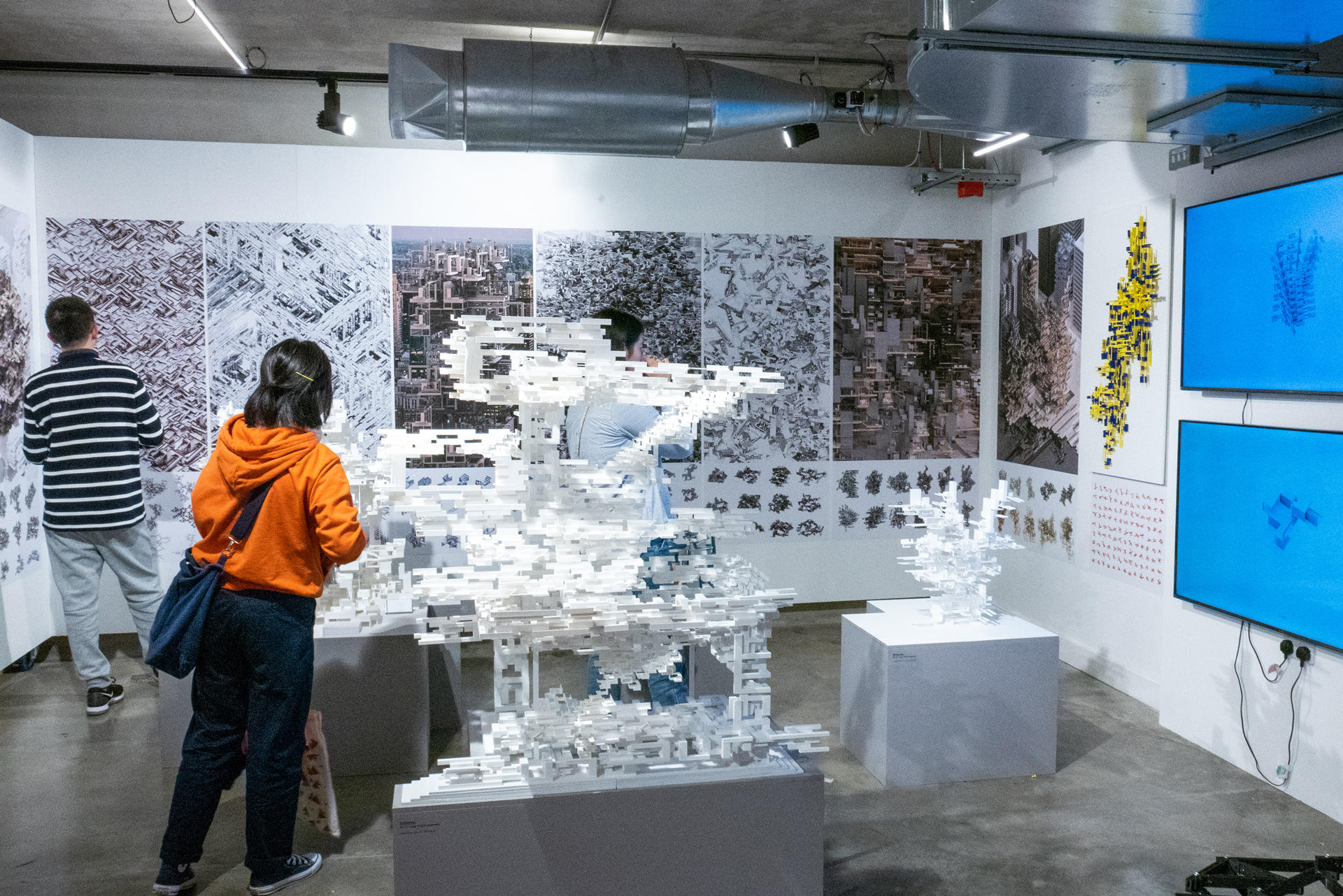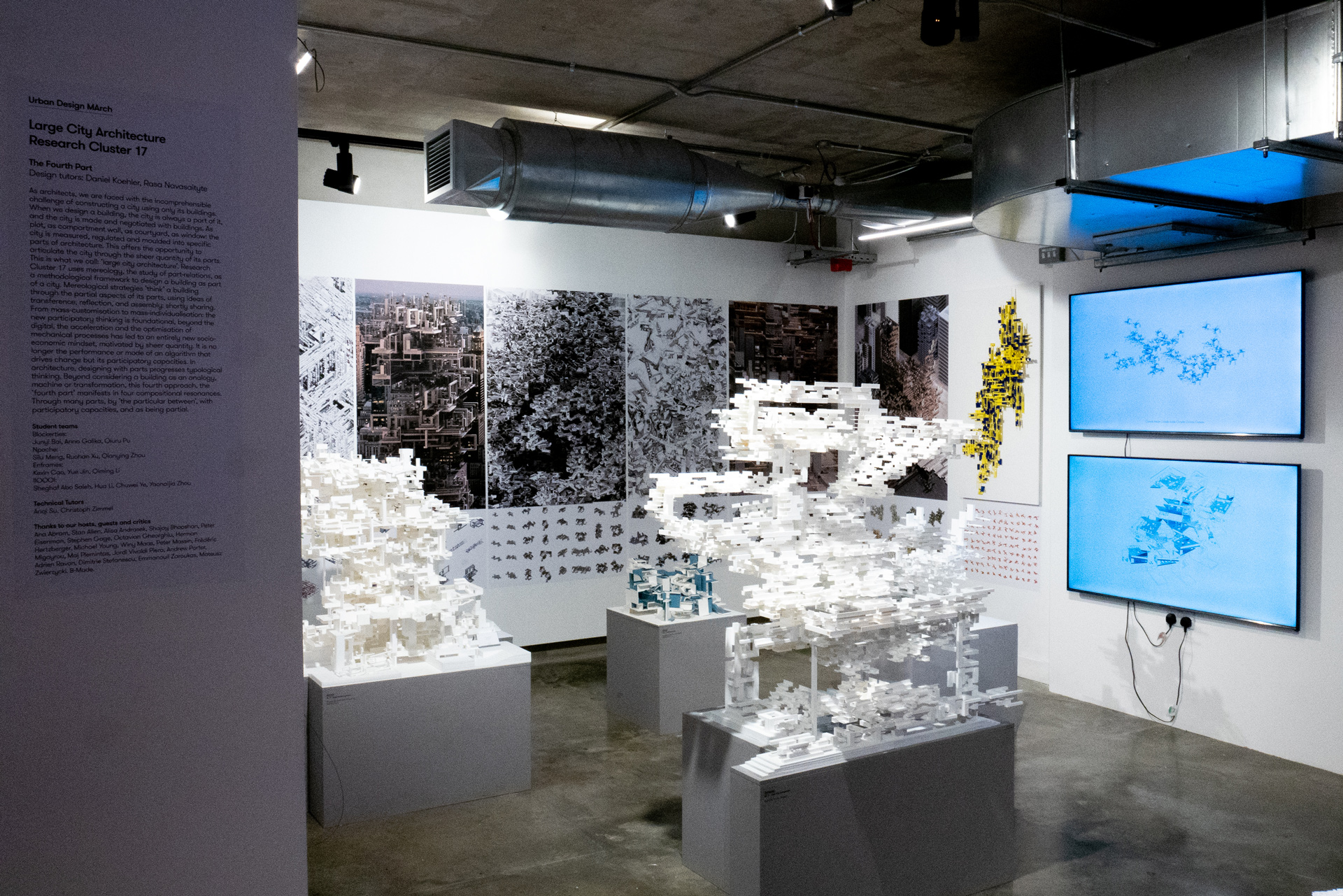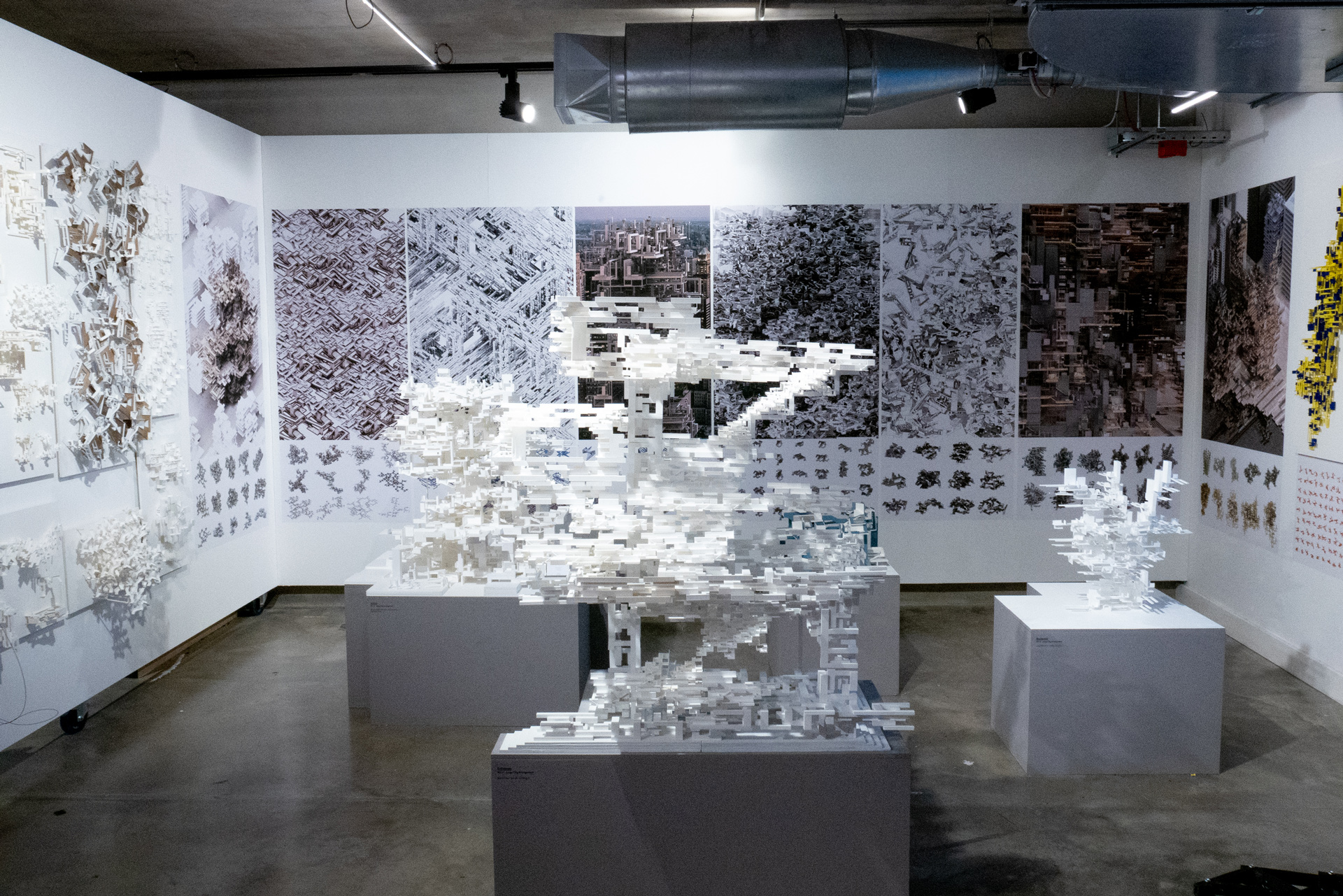BPro Show 2018: The Fourth Part.
Research Cluster 17 - Large City Architecture
B-Pro Urban Design, The Bartlett School of Architecture, UCl London
led by Daniel Koehler and Rasa Navasaityte
2017-2018
Team Blockerties: Junyi Bai, Anna Galika (highest score in design and theory), Qiuru Pu
Team Npoche (Gold Award 2018): Silu Meng, Ruohan Xu, Qianying Zhou
Team Enframes: Kexin Cao, Yue Jin, Qiming Li
Team IIOOOI: Sheghaf Abo Saleh (Best Thesis Award 2018), Hua Li, Chuwei Ye, Yaonaijia Zhou
Thanks to our hosts, guests and critics:
Anna Abram, Prof. Stan Allen, Prof. Alisa Andrasek, Shajay Bhooshan, Roberto Botazzi, Prof. Peter Eisenman, Prof Stephen Gage, Octavian Gheorghiu, Prof. Herman Hertzberger, Michael Young, Prof. Winy Maas, Peter Massin, Prof. Frédéric Migayrou, Maj Plemintas, Jordi Vivaldi Piera, Andrew Porter, Adrien Ravon, Dimitrie Stefanescu, Anqi Su, Emmanouil Zaroukas, Christoph Zimmel, Mateusz Zwierzycki.

We as architects are faced with the incomprehensible challenge to construct a city and that only with its buildings. When we design a building, the city is always a part of it; the city becomes with a building and is negotiated as, in and with a building. As plot, as compartment wall, as courtyard, as window: the city is measured, regulated and molded into specific parts of architecture. This opens the opportunity to articulate the city with the quantity of its parts. This is what we call: Large City Architecture. Here Mereology becomes an important methodological framework to design a building as part of a city. Departing from the individual, mereologies describe the overlaps between discrete entities, considered as parts. Mereological strategies think a building through the partial aspects of its parts using properties of transference, reflection, and gluing: shortly sharing.
From distributive manufacturing to the internet of things: today's concepts of sharing promise systematic shifts in the economy, industry, and beyond. From mass-customization to mass-individualization: the new participational thinking is foundational, shifting the Digital into the Fourth Industrial Revolution. Beyond the Digital, the acceleration and the optimization of mechanical processes led to an entirely new socio-economic mindset, triggered by sheer quantity. It is no longer the performance or mode of an algorithm that drives change but its participatory capacities. Parallel in architecture, designing with parts progresses typological thinking. Beyond considering a building as an analogy, machine or transformation this fourth approach, the Fourth Part manifests in four compositional resonances. Through many parts, by the particular between, with participatory capacities, as being partial: partial as cities have ever been.


Beyond urban form, the four projects can be seen as the progress and contradiction of classical design strategies linked to typological thinking. NPocheprogresses the architectural notion of the Póche into computational means. The drawing of that which is the same turns the hatching of a mass into a computed city of sameness, contradictory as a heterogeneous human reality. Blockerties deliberates property relations by hacking economic forms of distributive computation. By provoking partitionings of distributive chains, the project offers a new public at the gaps of computational enfilades of hyper-trading. Enframes challenges topology with mereology. With the particular relation of the urban coincident, a lattice turns into an enframing, urban condensate. iiOOOI encapsulates the distinction between an inside and an outside into a partial entity turning a building into a city of labyrinthic enfilades.




